Archipelago without Plastic: Krapanj and Zlarin Islands Moving Away from Disposable Plastics!
July 4, 2021 - After almost three years of successfully implementing the initiative "For Zlarin without plastic", the initiative "Archipelago without plastic" opened in Krapanj and Zlarin this weekend, marking the International Day without plastic bags and the European Union Directive on Disposable Plastics in Croatia.
"For Zlarin without plastic" is an initiative initiated by Ana Robb, Nataša Kandijaš, Ivana Kordić, and Jelena Radošević to stop the use of disposable plastic on the island, making Zlarin the first Croatian island free of disposable plastics, reports HRTurizam.
The initiative was recognized and received great media attention, but also numerous awards, and with new partners - the association "Together for Krapanj" and the Tourist Board Krapanj-Brodarica, the project "Archipelago without plastic" designed a way to spread the Zlarin example to other islands - for a start, on Krapanj.
"In the past three years, the island of Zlarin has made significant progress in reducing pollution with disposable plastics, but also a shift towards the concept of sustainable tourism through which we provide visitors with summer content in the summer season," said Tatavaka and Together for Krapanj, which are launching this new initiative in cooperation with the Zlarin and Krapanj-Brodarica tourist boards.
The program will start on July 4 in Krapanj at the Hotel "Spongiola" with the signing of the Charter on Krapanj without plastic, and at the same time, the trabaccalo Desto of the Cukrov family, who are co-signatories of the Charter, will dock in the port of Krapanj. This 120-year-old wooden trabaccalo has survived the dominance of plastic ships, and on this occasion, it will become a mobile gallery of the artist Sanja M. Vukman and her exhibition of ecological signs entitled "Objects of an imaginary traveler through the archipelago of dreams".
The presented personal belongings of the imaginary traveler are real props for traveling through the archipelago experienced through the process of research and contemporary interpretation of traditional living. The exhibits are useful objects, field samples, seeds, working materials in the process, fragments, and fragments connected by the same longing to live the daily available poetry of small things.
Island caterers and other small entrepreneurs who primarily depend on the reduction of plastic distribution will sign the "Charter of Krapanj without plastic" and thus become the first island with which the adventure of "Plastic-free archipelago" begins.
The initiative is supported by the City of Šibenik, as a partner in the BeMed program project, as well as the Šibenik-Knin County. The project partner and support at the international level is SMILO - Small Island Organization, while the initiative is supported by Julije Domac, President of the Energy Transition Council of the President of the Republic of Croatia and Director of REGEA who will join the opening and "Island Movement" as a network organization island communities of Croatia.
The associations are especially proud of the cooperation with the ambassador of the "Archipelago without plastic" - Domagoj Jakopović Ribafish, whose project "RokOtok" symbolically connects Krapanj, Zlarin and - as the next step - the island of Prvić. Ribafish will start the implementation of this year's "RokOtok" edition by swimming between Brodarica and Krapanj, and will hold workshops for children in Krapanj and Zlarin.
For more, follow our lifestyle section.
Krapanj, An Island with Centuries-Old Tradition of Sponge Harvesting
July 28, 2020 - Krapanj is the lowest and smallest inhabited island in the Adriatic. Its highest altitude doesn't exceed 1.25 m and in the 1960s, with more than 1,500 inhabitants, it was the most densely populated island. It is located in the Sibenik archipelago and is 400 meters away from the mainland village of Brodarica. There is a small 'ferry' which takes you to the island in less than five minutes.

Although it is not such a popular tourist destination, Krapanj is the cradle of a centuries-old tradition of sponge and coral collecting, fishing, and diving.
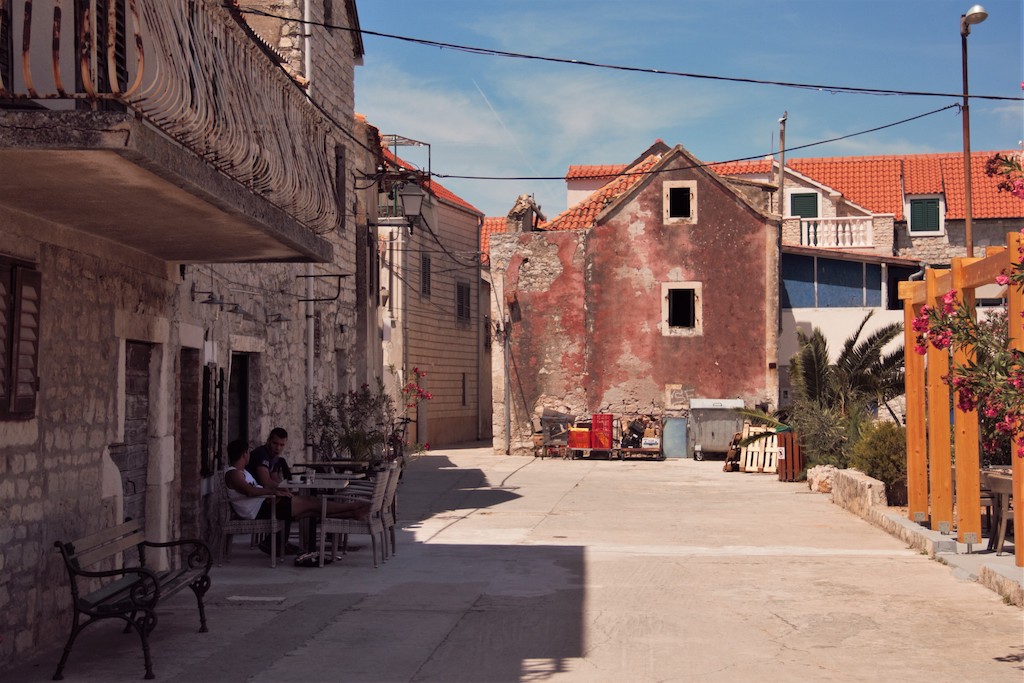
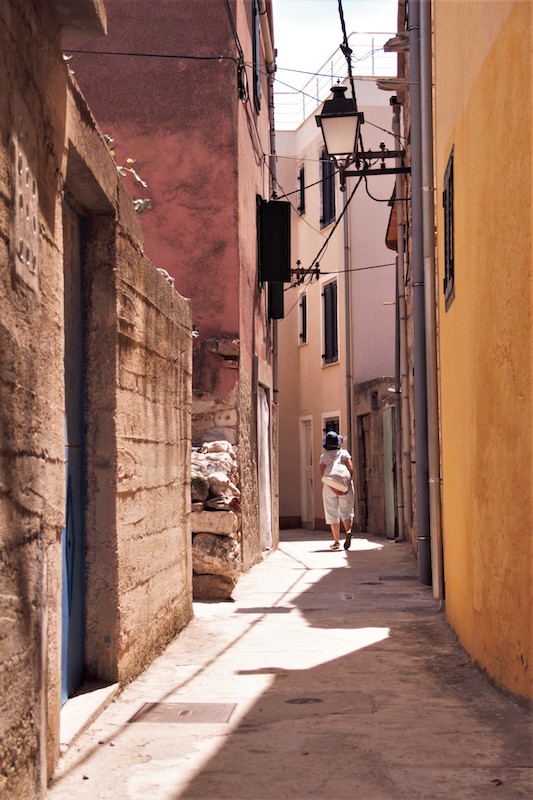
Walking through the streets, I stumbled upon a beautifully decorated courtyard of the family museum of sea sponges, Spuga 2. Family Tanfara is one of the three families on the island that still hunt sea sponges.
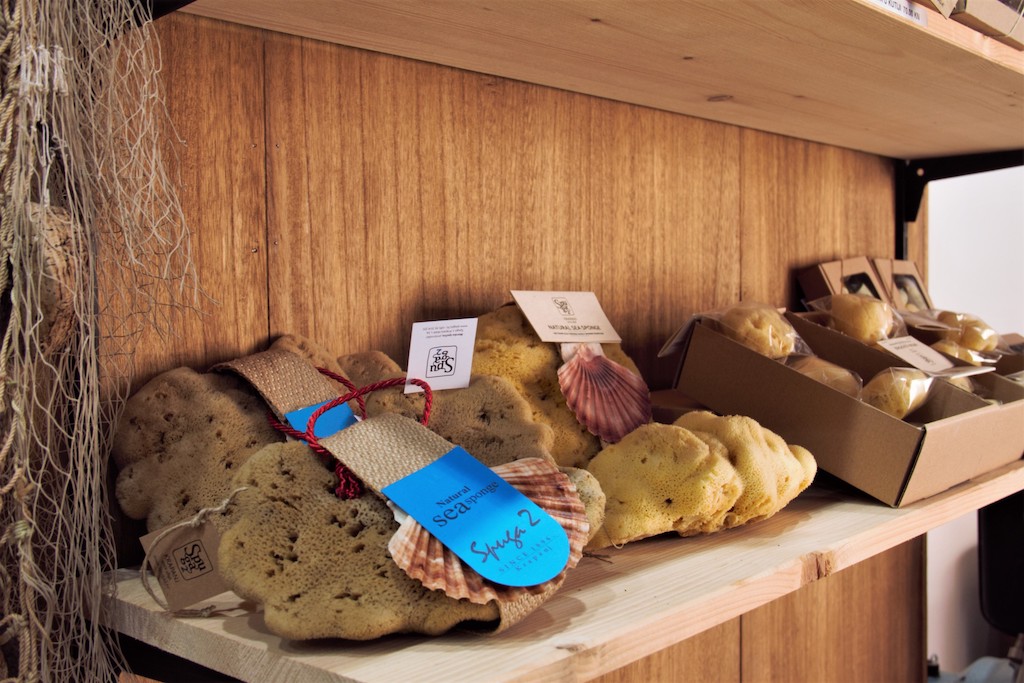

"Currently, 106 inhabitants live on the island, of which three families - Tanfara, Milutin and Jaram, are still engaged in this 300-year-old business. There is no school for this, but it is passed on within the family. My husband, Roko, is the fourth generation in his family, and we hope that our children will continue our tradition“, says Milena Tanfara, who works in the museum, while her husband is on board.
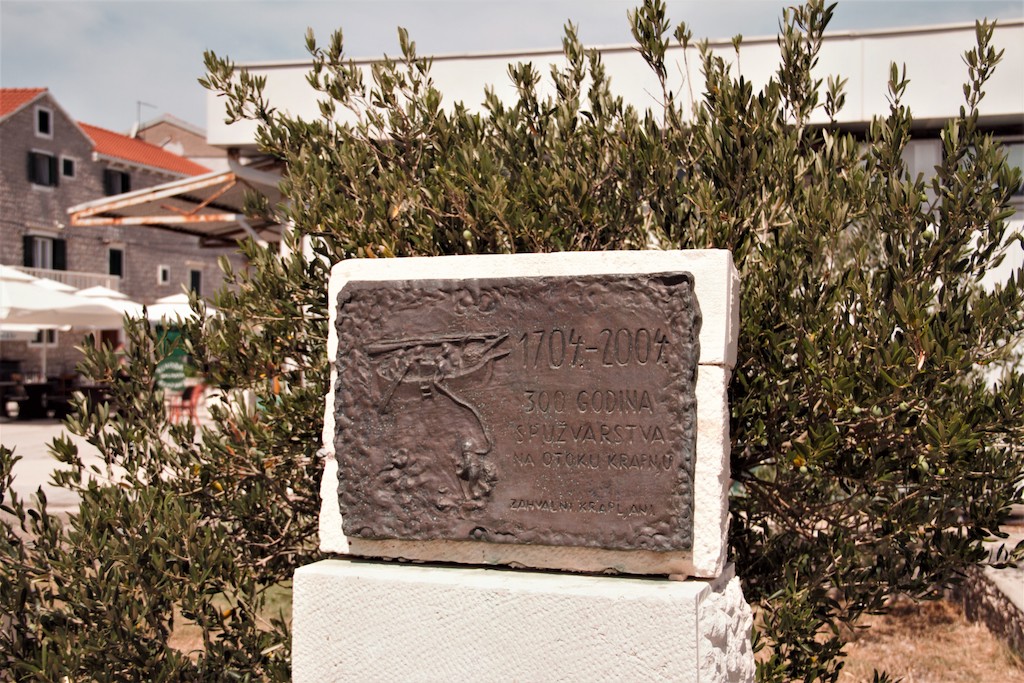
Legend has it that the people of Krapanj were taught to hunt sponges by a Greek from Crete named Fr. Antun at the beginning of the 18th century. There were two men in each ship: 'svicar', who caught the sponge with a spear and 'sijavac' who rowed. The prey was divided among themselves so that the 'svicar' was given half, the 'sijavac' a quarter and the ship a quarter. If the ship was from 'svicar', then two-thirds belonged to him and one to the 'sijavac'.
At first, the people of Krapanj were more involved in coral collecting, but then they transmitted knowledge to the inhabitants of the neighboring island of Zlarin, who today make coral jewelry.
"In the beginning, sponges were hunted with fishing spears, in diving suits weighing nearly a hundred pounds, but today it is mostly done with modern equipment. The greater the depth at which the sponge is located, the greater their quality is“, she explains.

Sponge hunting begins in May, or as the locals say, when crickets begin to be heard, and lasts until October. Winter is a break time for sponges to regenerate and reproduce. They are always taken out in the morning and usually, two to three dives are made. Because of a greedy desire for money, there is an illegal hunt of sponges done by people who are not familiar with the ecology of the sea. Sponges are extremely valued today, so in Croatia, the raw material is usually sold for 100 euros per kilogram.

"We hunt from the north to the south of the Adriatic and after collecting in an area, we don't go there for at least two years to let the fauna recover“, Milena adds.
Except as a decoration and souvenir, sponges are very useful in everyday life, for face and body care, washing and cleaning. Natural sponges are much more durable and of better quality than synthetic ones and they absorb liquid better. A sponge can last for years, but if used for cosmetic purposes, it is recommended for up to two years.

"Sponges need to be treated before use and the process takes 24 hours. We strive to maintain an ecological approach in processing, so we mostly use organic chemicals. I can't describe the whole process to you… it's a secret“, says Milena proudly.
This museum is the place where you can learn about the rich heritage of the island, see the old diving equipment, ancient daggers and sponges, and even more, the entrance is free!
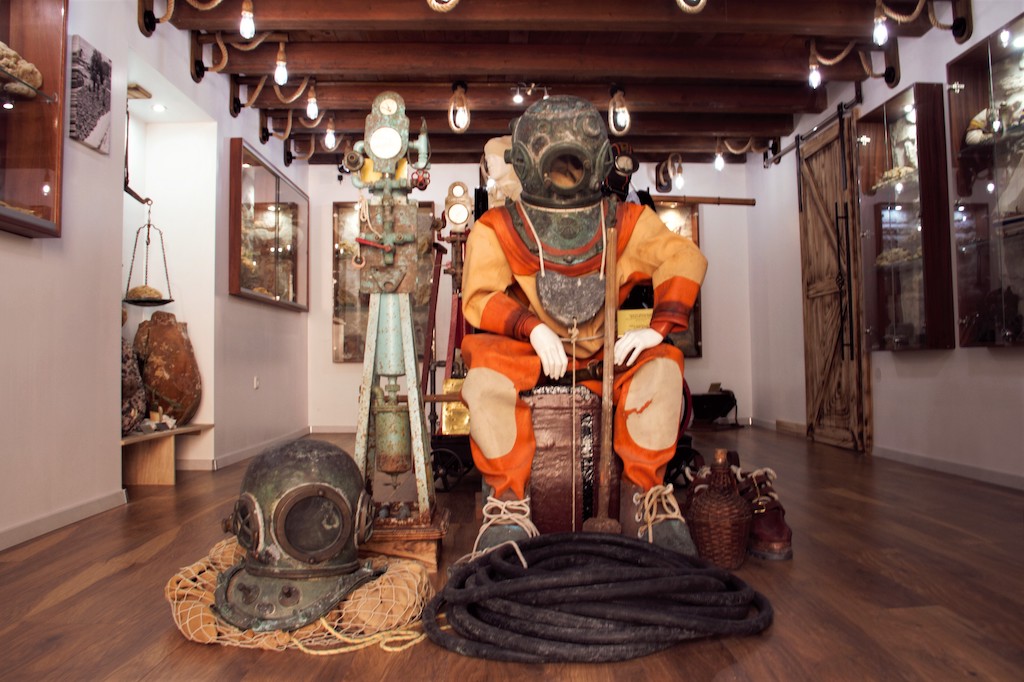
"Our intention when opening this museum was to interest and educate people about this wonderful tradition, and if they want, they have the opportunity to buy souvenirs in our shop“, Milena concludes.
To read more about lifestyle in Croatia, follow TCN's dedicated page.
Krapanj Gains Attention of Sailing Europe Nautical Blog
The nautical blog Sailing Europe published a heartwarming piece about the often overlooked Croatian island of Krapanj near Šibenik. While the original article is of some age now, it's unusual to see Krapanj mentioned in detail by anyone outside of Croatia, as media coverage about the lowest-lying Croatian island, famous for its long tradition of sponge diving, is unfortunately not all that frequent.
As Morski writes on the 26th of January, 2019, the island of Krapanj is the smallest and lowest-lying inhabited island in the whole of the Adriatic sea. Located just south of the historic Dalmatian city of Šibenik, it rises only 1.5 metres above sea level, making it the "lowest" Croatian island of all.
About 200 inhabitants live permanently on an area of less than 0.5 km². Not so long ago, there were about 1,500 people living on Krapanj, which once made it the most heavily inhabited island in the Adriatic. The island fosters a long tradition of dealing with sponge, a way of life which has been known on Krapanj for centuries now.
The sponge tradition on Krapanj is over 300 years old, and in 1893 it became a real job, because then the first set of heavy diving equipment arrived at the island, and an official diver's cooperative was established. The secrets of sponge diving on the island were originally brought there by a Franciscan, who arrived there from the Greek island of Crete.
He taught local divers from Krapanj how to handle the raw sponges, which is this unassuming Greek could easily be considered a reformer of the local economy on the island. You can find out more about the history of the island in the monastery of Sv. Križ, surrounded by a thick pine forest, in the very centre of the island.
Krapanj is connected to the mainland by a boat which operates daily, while a taxi service is available on request.
The author of the text warns nautical drivers to take care of the varying depths of the sea, especially when they approach Krapanj through the very small group of islands located just in front of it.
Detailing further, the author of the text on Sailing Europe states that even though Krapanj is not the most popular Croatian sailing destination, one should be sure to visit it.
Follow our dedicated travel page for more.
Transparent Tunnel from Brodarica to Krapanj?
''There's a long way to go before realisation, but one Polish firm is extremely interested...''
Šibenik to Renovate Neglected Promenade on Krapanj Island
The island of Krapanj is ready for a makeover, thanks to EU cash.
Conde Nast Traveler Chooses Croatia's 8 Best Islands
Conde Nast Traveler continues their love affair with Croatia.
Women’s Regatta, Celebrating the Grit of our Grandmothers
The Women’s Rowing Regatta held in Krapanj on the 1st August every year, is a beautiful tradition to respect and celebrate the true grit of Babas (grandmothers) gone by.
The Telegraph Names 15 Best Croatian Islands
The 15 best Croatian islands according to The Daily Telegraph.


